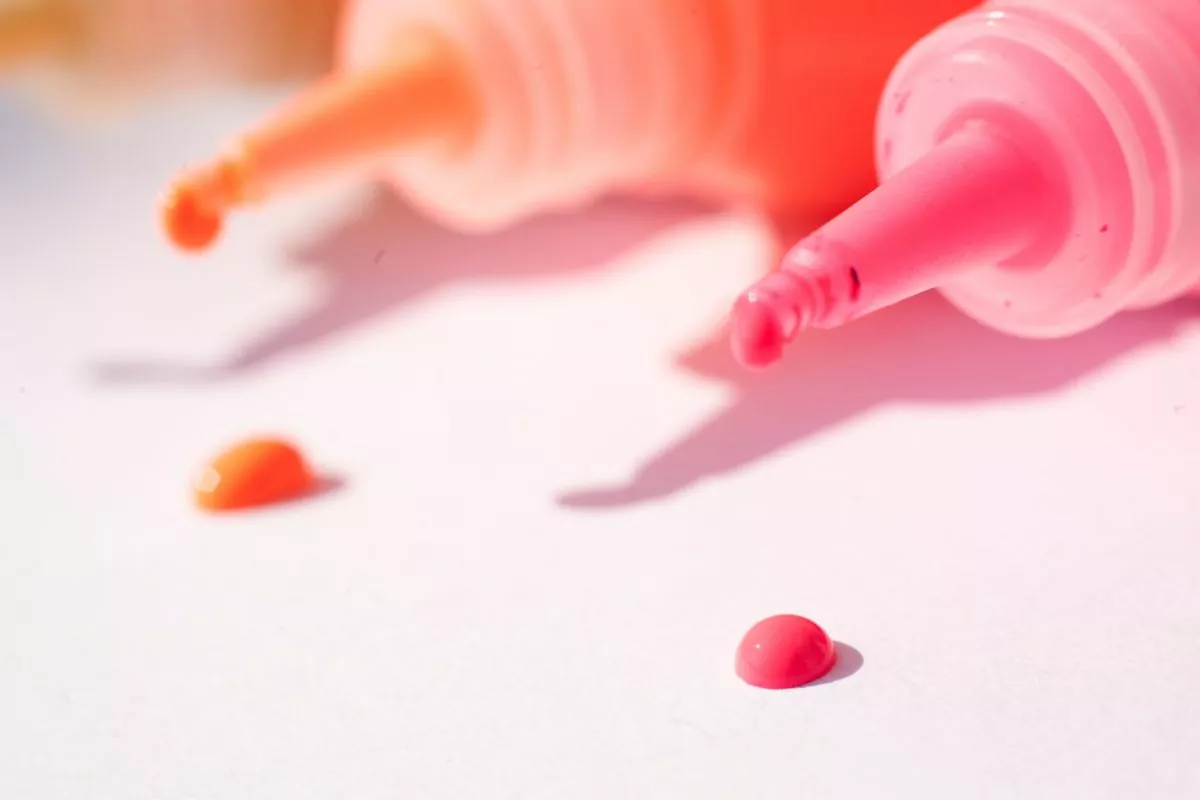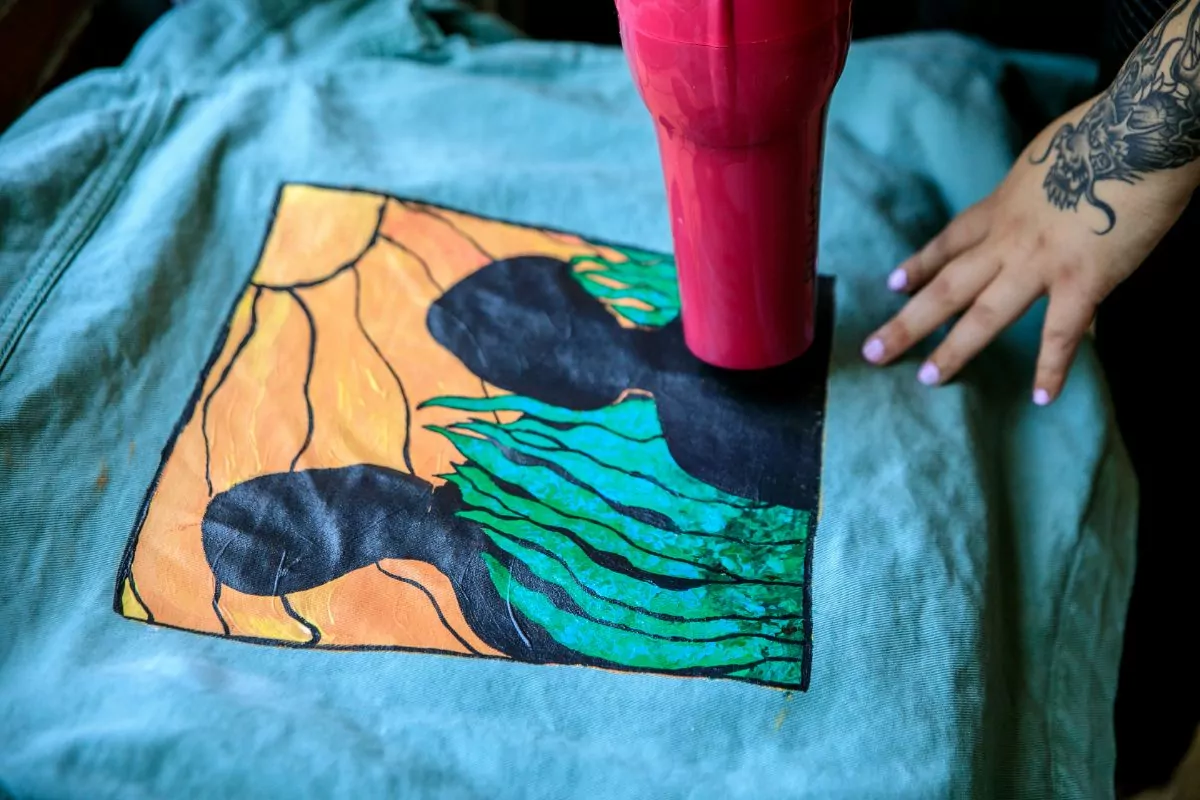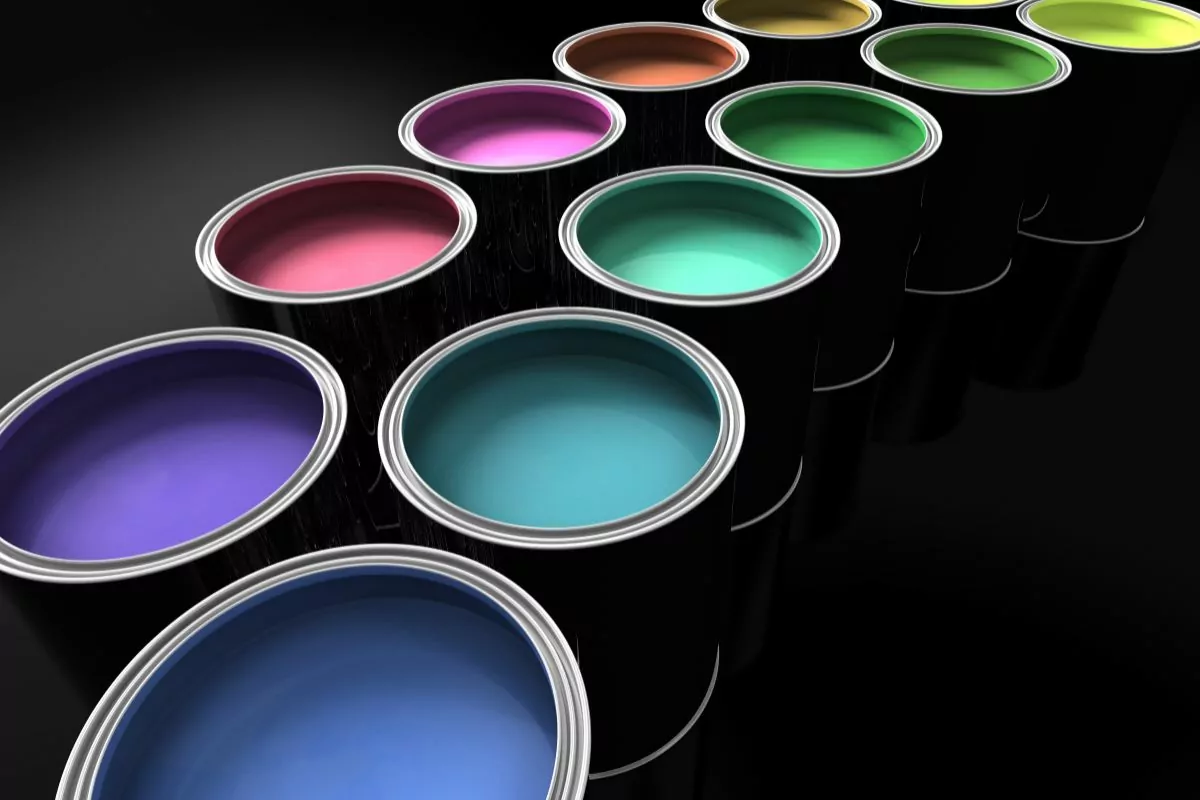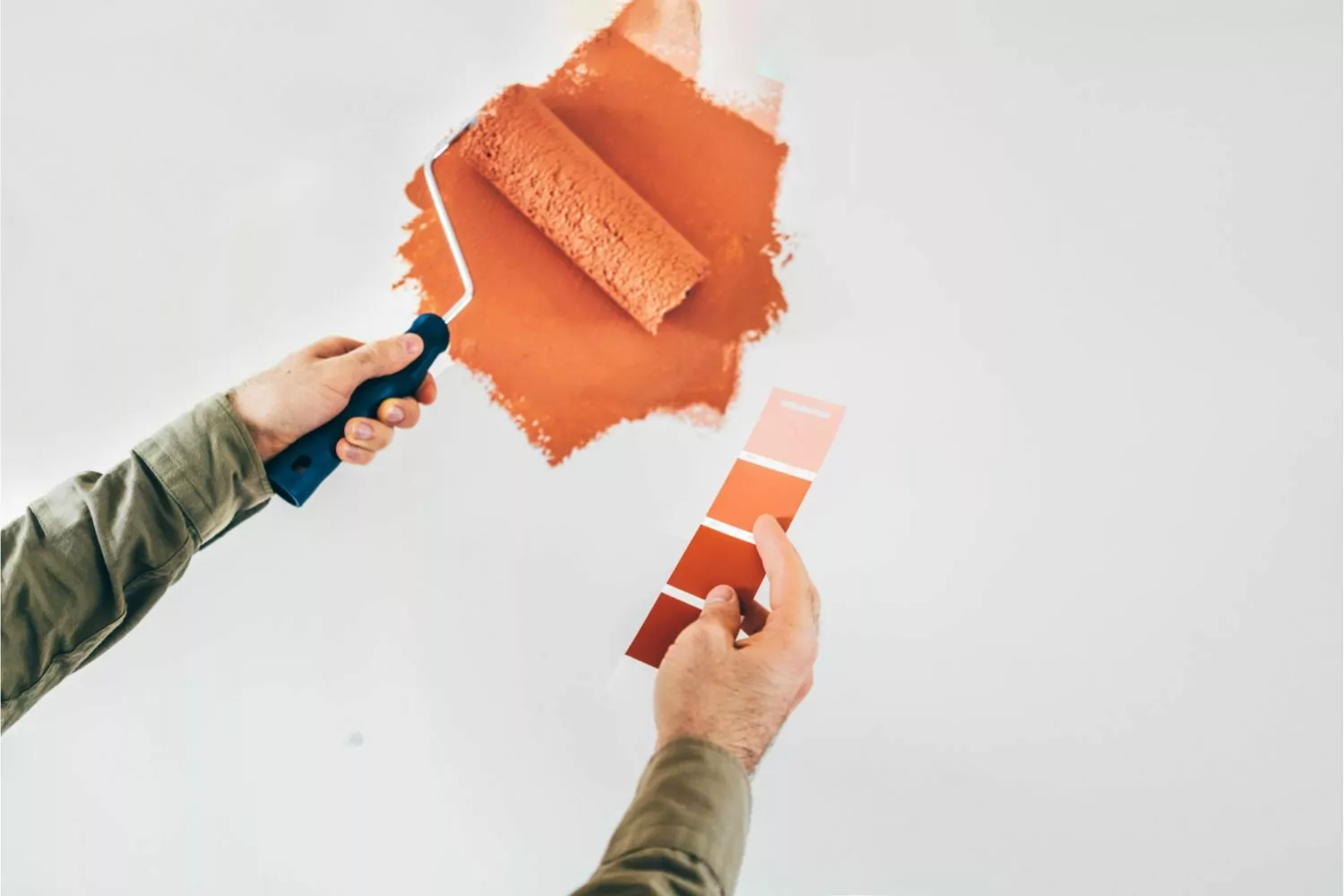Acrylic paint is probably one of the most popular types in the world. Easy to use, carrying a strong color, and not fading easily over time, are just some of the best qualities that people love about it.

Add to that the fact that acrylic is so readily available, and it’s not hard to see why so many people love working with that specific paint!
However, this also leads to a lot of questions about this paint, and what some of its shortcomings might be, No paint is perfect, after all, so it pays to know what the limitations of acrylic might be before you start slathering it on every surface within a 10-yard radius of you (or whatever you choose to paint).
One of the major negatives that people will point out about acrylics is that they don’t wash easily, making them a chore to have to clean up, if you make a mistake,
But how true is that exactly? Is acrylic just not that washable? If this is the case, is it the same for different surfaces, or are some easier to clean than others?
That’s the question that we aim to answer today!
In this guide, we have not just tried to answer the question ‘is acrylic washable?’, but we have tried and tested this paint off a variety of surfaces, to see which ones, if any, handle washing off acrylic better.
How Washable Is Acrylic?
So, before we get any further into this topic, we should probably try and give as best of a summary as we can that you can take away from this.
In short, yes, acrylic pain is often washable. However, this relies on a few different factors, such as how wet or dry it is, what method of washing is being used, and the type of surface that you’re trying to clean it on.
However, this still leaves quite a few unanswered questions. What exactly makes acrylic such a strange and awkward paint to try and wash? What methods are best to wash with?
What do we even mean when we mean that acrylic is washable in the first place?
If you want to find the answers to these, make sure to keep scrolling!
Defining ‘Washable’
Before we start talking about different surfaces, we first need to define what exactly we’ll mean when we say a surface is ‘washable’, and how that differs from what people may normally be associated with the term when it comes to paints and painting.
See, when discussing how paint is affected by cleaning or washing it, there are actually two different definitions that people will often use.
- One definition of ‘washable’ refers to how easy it is to wash off of a surface. This can often apply to young or new students that are looking for paints that can be washed in case a mistake is made (i.e. ‘What type of paint is washable from jeans’). This is usually applied to paints such as poster paint and finger paint, as well as watercolors, amongst several others.
- The other main definition of ‘washable’ is how water-resistant is the paint. This definition is focused on how hard it is to remove a kind of paint from a surface once it has dried (i.e. ‘How washable is this paint from this wall once it dries?’). This group includes paints such as acrylics and oil paints.
As you can see, these definitions are virtually the complete opposite of each other, which can easily lead to confusion amongst some people when they hear that acrylic is or isn’t washable.
So, for the remainder of this guide when we are referring to a surface as being ‘washable’ of acrylic, we are discussing how easy is it to remove from a surface or material.
Is that all clear? Great, moving on.
Properties Of Acrylic
It’s also important to understand what properties of acrylic make it such an awkward paint to wash from a surface.
One of the major features that separate acrylic from other paints is that, for water-based paint, it is surprisingly durable and resistant to deterioration.
You can see this for yourself if you have some acrylic paint handy, and a spare surface or item (that you don’t mind potentially ruining)!
When you put a blob of acrylic paint on a surface, you’ll see that it is more or less a liquid, if a little viscous, and not as quick to run as others.
This is what allows it to be applied so easily onto a surface like a canvas or ceramic with a brush, without it running down and away from you.
Even when watered down, acrylic still largely maintains this quality (unless you’re adding an obscene amount of water to your acrylic, of course!)
However, once it dries, acrylic turns into this solid, tough plastic-like material, that has a texture that is not too different from rubber in some cases.
You might be able to see this for yourself if you have left a blob of acrylic out for as little as an hour. The still-wet center will wash off easily, but a thin ring of dried acrylic will be left behind, which is a much bigger pain to clean.
This quality makes the dried paint quite hydrophobic, allowing water to run off of the surface it is painted on, without causing the paint to be lifted or detached from the surface.
It’s why so many outdoor items will usually be painted with acrylic if they need a fresh coat of paint.
How Different Surfaces Handle Acrylic?

So, we know how acrylic acts when wet and dry, and what we mean when we’re discussing ‘washable’ surfaces from this point.
However, when it comes to discussing surfaces that you can wash acrylic from, things can get a little more confusing.
See, on surfaces like fabrics of a shirt, canvas, or even from the skin, acrylic might be much easier to remove or clean off than, say, from glass or metal.
So, let’s start taking a look at how acrylic washes from these different surfaces if it can be washed in the first place!
Acrylic On Skin
Starting with perhaps the surface that you’ll the least want acrylic on, we have bare skin.
This will likely be a big issue for some people.
After all, while acrylic is generally considered not the harshest of painting chemicals to get on your skin (at least, when compared to others like oils and sprays), acrylic can still be pretty irritating on the skin, thanks to some of the mildly toxic chemicals in it.
So, getting it off of your skin is pretty important!
How To Remove
Fortunately, skin is one of the easier surfaces that you can wash acrylic off of. When it is wet, it can simply be rinsed off with some warm water and a little soap.
Once it dries, however, you’re probably going to need to be a little more thorough. Making sure that you have plenty of soap and warm water is handy, as you’ll need to thoroughly rub your hands together for a decent amount of time.
Failing that, there are some other items that you can use to clean acrylic off of your hands.
Rubbing alcohol is probably one that most people will have handy, but oil body or baby lotion also works quite well, as the acrylic binds to the oil, making it looser and more fluid again.
Rubbing this between your affected hands, fingers, or whatever other skin has acrylic on it, should do the trick.
Last Notes: When To Remove
In short, the sooner that you try and remove the acrylic before it dries, the better!
Acrylic On Clothes Fabrics
We’ve all been in that situation. You’ve been eagerly painting away on a fence, a canvas, or even a model or teapot, for who knows how long.
You’re about to call it a day, only to look down and see that you have bright red acrylic all over your favorite denim jeans (see also “Sewing Denim Like A Pro: Our Best Tips And Tricks“) and white cotton shirt.
Don’t worry. It happens to the best of us!
How To Remove
With wet acrylic on clothes, you’ll often find that warm, soapy water does the job quite well. You’ll want to make sure that you soak the item of clothing in the water for a while before trying to remove it.
The water will stop the paint from curing, giving you the chance to gently rub the item of clothing with a disposable sponge or your hands.
Once it has dried, you’ll find that the acrylic is pretty tough to get rid of.
It will fade over time if you try to wash it, but that could take several thorough washes to see any real effects, and you certainly don’t want to wash your affected item with other clothes, in case they too are damaged.
If the acrylic has dried, try giving it a single thorough wash, have some warm soapy water or rubbing alcohol handy, and try rubbing the remaining acrylic out.
There’s a good chance that the acrylic will bind differently with different fabrics, as well as different consistencies of acrylic. Acrylic that wasn’t watered down when being applied might actually be able to be peeled off relatively harm-free.
Last Notes: When To Remove
Like with skin, clothes of any material are best washed while the paint is still wet and being cured. Don’t leave it too late!
Other Notes
Interestingly enough, we’ve found that higher-grade, professional artist-level acrylic, is actually harder to clean from your clothes than standard or cheaper low-grade paint is.
It is due to the much higher and finer pigment count of more upmarket acrylics, allowing the paint color to distribute better across the surface it’s being used on.
Great for getting a strong, consistent color, even down to the smallest detail. However, that higher pigment count allows it to spread and bind to fabric fibers much easier, too.
Acrylic On Hair
Like with skin and clothes, hair is one of the worst things to get acrylic stuck in. The viscous, oily texture it has cause hair to clump together, making it both feel stiff and awful, as well as a hassle to try and style and/or brush, alongside the harsh chemicals.
How To Remove

Once again, wet acrylic is a relatively easier problem to take care of. A shower of warm water and soapy water, as well as a thorough shampoo rinse, will usually be enough to get rid of the paint.
Any leftover flecks will usually end up falling off with the strands of hair as they fall out and regrow.
Now, dealing with dried acrylic in hair? That’s a totally different beast!
Dried acrylic will take at least a few hours in warm, soapy water, just to even get the paint remotely soft enough to start teasing out the paint and affected hair.
If this solution doesn’t work, the safest solution for you to get rid of it is to get your hair cut, making it short to above where the affected hair is.
This may not be an option that everyone wants to do, try soaking it in warm water first before resorting to the shears.
This is one of the few times that we would not recommend using rubbing alcohol or similar items like acetone to rub and remove the color, especially if you have pigmented hair.
The alcohol is likely to discolor your hair even further, potentially doing some serious damage to it in the process.
Last Notes: When To Remove
Wash and remove the acrylic from your hair as soon as possible, if you want to avoid an impromptu trip to the barbers or hairdressers! And avoid rubbing alcohol and polish/paint removers at all costs!
Acrylic On Canvas
Moving on from the personal items, we have a surface that you might want to get acrylic paint on.
Canvas is probably one of the best surfaces to paint, as it absorbs the pigments of acrylic paint beautifully (see also “How To Paint On A Black Canvas For Beginners“).
That quality also makes it a pain to wash acrylic from, however.
How To Remove
Even when the acrylic on the canvas is wet, wiping with warm water could take quite a long time, and will only get more difficult as it dries.
The best course of action that you can take is to allow the canvas to soak in a large bowl of warm, soapy water, then try to gently run and wash the canvas off with a disposable sponge.
Alternatively, you could also use some denatured alcohol and warm water to dampen a towel, and gently rub the canvas, then leave it for 30 minutes.
This will also lift most of the acrylic from the material, which you can then wipe off afterward with a towel. Once the acrylic is off, clean off the canvas with a clean towel to dry it and pick up any last acrylic stains.
Alternatively, if you find that the soap or denatured alcohol doesn’t quite work, but does manage to lift the acrylic off at least a little, a paint scraper will be very useful for scraping that top layer off of the surface.
Last Notes: When To Remove
Canvases are a tricky surface to get acrylic out of. Fortunately, if you can steep and soak early enough, the less hassle it will be to wash off.
Acrylic On Glass
It’s a mistake that is all too easy to make. You’re painting a wall above a window, only to accidentally splash some of that acrylic onto the pain of glass below you.
Acrylic on glass just doesn’t look nice and can ruin the ambiance of an otherwise immaculately furnished room.
So, what are your options?
How To Remove
Like with many of the other surfaces we’ve covered, glass is easy to clean if your acrylic is still wet. Just rub some warm water with some soap into a sponge, and you’ll be able to clean it up, with no problem.
We would recommend going over the cleaned surface with some kind of disposable cloth, however, to make sure that you have gotten rid of every speck.
We’re telling you to be thorough whilst it’s wet because dried acrylic on a glass window pane is one of the most difficult surfaces to clean!
If the glass has a sealer applied to it when the acrylic has been brushed onto it, you’re going to seriously struggle to try to get it off. It’s going to take a lot of denatured alcohol, and a lot of rubbing to even get through that layer.
However, if the glass hasn’t been sealed or applied with a lacquer layer, you might be in luck.
If you can scrape a corner of the paint off the glass, you might be able to peel the acrylic off in chunks. Be careful s you are scraping it, as you may accidentally scratch or chip the glass underneath

Last Notes: When To Remove
Once again, leaving the surface to be cleaned later, at least without steeping it, is only asking for more work and trouble later!
Acrylic On Metal
Metal is in a very similar position to glass, in that it is a surface that takes acrylic very easily, making it an incredibly tough surface to wash.
How To Remove
Once again, all it takes to remove acrylic from metal while it is wet is a little elbow grease, soapy water, and a sponge or rag.
The real tricky part starts once the paint has dried.
Warm soapy water, even after being steeped for a few hours, might not be enough to wash it with. This is especially the case if the water is too hot, as you find yourself handling a nearly burning-hot metal item!
However, applying and rubbing denatured alcohol into the item will have better results. Simply dab your cloth or sponge into the alcohol, and start rubbing small circles across the surface.
Avoid using acetone here, as that has been known to damage metal when it is applied!
Last Notes: When To Remove
In short, if you aren’t going to wash your metal surface quickly, make sure that you’ve got the time and patience to wash the metal item with alcohol
Acrylic On Plastic
Plastic and acrylic go together like peanut butter and jelly. Only less tasty.
Rough plastic is a material that absorbs and binds with acrylic very easily, which is why so many model makers and painters use these two items together.
Unfortunately for you, it also makes washing the acrylic off a nightmare when dried!
How To Remove
Wet acrylic can be removed from plastic with, say it with me now, warm water and soap.
However,
If you do plan on trying to remove dried paint from plastic, you have the standard options of warm water or denatured alcohol, with some warm towels or cotton balls being applied to get them clean.
However, if you are planning to reapply a coat of paint to your plastic after removing the old paint, you could try scrubbing or scouring the paint off, ideally with something like sandpaper.
This will scratch the plastic underneath, however, so make sure that you’ll be able to either treat it or deal with the plastic-looking scuffed.
Last Notes: When To Remove
Getting paint off of plastic isn’t the issue. It’s not scratching it that will be the challenge!
Acrylic On Wood
As we’ve mentioned a few times, wooden fences are often painted with acrylic to protect them from the elements.
So, how do you wash materials like this?
How To Remove
You’ve heard this story before by now. While the paint is wet, just use warm water to wash it off.
If it is dry, try pretty much any of the methods we’ve covered. sandpaper, alcohol, or good old-fashioned water can often do the trick.
Final Thoughts – Which Surface Is Easiest To Wash?
So, with all that information covered, which surface would we say is the easiest to wash?
Well, generally speaking, the softer or more malleable surfaces like fabric, canvas, and even skin, can be taken care of pretty easily, especially when the acrylic is still wet.
When acrylic dries on a surface like glass, cement, or metal, you’ll have to resort to some more specific washing methods to get that paint off.
If there is anything to take away from this guide, it’s this: Acrylic only gets harder to remove the longer you leave it, with virtually all surfaces getting more difficult as the pigments dry and become tougher.
- How To Sew Fabrics Together - June 5, 2023
- How Many Stitches Per Inch? - June 5, 2023
- How Long Does It Take To Sew A Dress? - June 5, 2023











